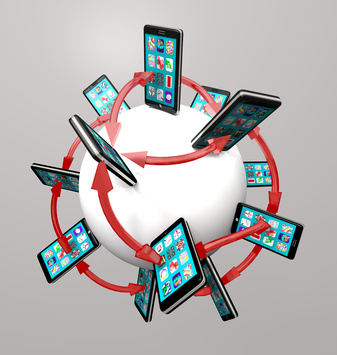Mobile Brings 1:1 Marketing Full Circle

Mobile marketing is the modern face of advertising. Sophisticated tools like geo-location software and mobile apps are stripping away the barriers between business and consumer, affording even the most modestly-budgeted mobile marketing campaign to foster precise, personalized relationships with an audience that never stays still, but for whom smartphones are a constant companion.
If the technology is cutting edge, the concept of one-to-one marketing is anything but. It dominated the commercial landscape until the middle of the 20th Century. Before radio, television and print media were widely available, the romantic image of the door-to-door salesperson selling his wares directly to customers was very much a reality. ‘The user experience’ – as nobody called it then – was top notch: a sales rep came to your home, demonstrated the worthiness of their product and, perhaps most importantly of all, put a face to the brand.
This marketing strategy provided accountability, intimacy and transparency, but was ultimately put to bed by the rise of mass broadcasting technology. Instead of reaching a few thousand people by sending out a hundred reps to knock on doors, businesses could reach millions in one go via a television commercial. For much of the post-war 20th Century, big advertising meant big networks and big money. Corporate muscle (devoid of accountability, intimacy and transparency) ruled the roost and the little guy was out in the cold. Who could compete?
The advent of cable television dealt the first blow to this monolithic, monopolized marketing culture. By appealing to niche markets on specialized channels, the company message might reach fewer people, but the percentage of conversions would be higher. Slowly but surely, broadcasting was superseded by narrowcasting.
Narrowcasting allows marketers to:
- Disseminate messages to different demographics and adjust each message accordingly
- Make sure content is only available to specific groups
- Provide high levels of relevance to the recipient
The trend started by cable television went stratospheric with the arrival of the internet, an ultra-targeted information portal that didn’t have to predict what people wanted; you could find exactly what you needed by filtering out everything else. Direct marketing wasn’t just back in business – it was business.
But the web solution also presented a problem: market fragmentation. One of the earliest constituents of the internet lexicon to take root in the public imagination was ‘SPAM’ – and it wasn’t because people liked it. In addition to filtering the information they wanted via search engines, people were ignoring the information they didn’t want by automatically trashing unsolicited emails from businesses. As soon as every business was shouting from the same platform, the public simply turned the volume down. By the mid-noughties, online marketing was threatening to become white noise for all but the richest of traders, who could afford to roll out costly SEO campaigns and buy space on premium web real estate.
Just when it looked like marketing power would once again be predicated on deep pockets, SMS messaging stepped into the breach with a more refined approach. Ironically, commercial texting’s wilderness years were brought to an end with the rise of the smartphone. Mobile devices are no longer simply convenient portable versions of landline phones. They are indispensable hi-tech appendages, the use of which is beginning to overtake desktop as people’s primary point of access to the web.
This increased focus on handheld devices has done wonders for SMS messaging. While consumers continue to spam filter emails, more than 90% of text messages are opened and read within minutes. Long before the humble text became a mobile marketing strategy, it was used primarily for personal communication. As such, it is a trusted channel, and mobile marketing campaign managers have cleverly reciprocated that trust by building opt-in only contact lists. In 2014, the holy grail of mobile marketing tactics is to transmit a unique message to individuals who want it, tailored to their wants and needs.
This new, consent-driven iteration of 1:1 marketing is allowing companies to reach customers on their own terms, and to offer preference-based special offers. Personalized marketing is back – and you don’t even need to leave the office to do it.


